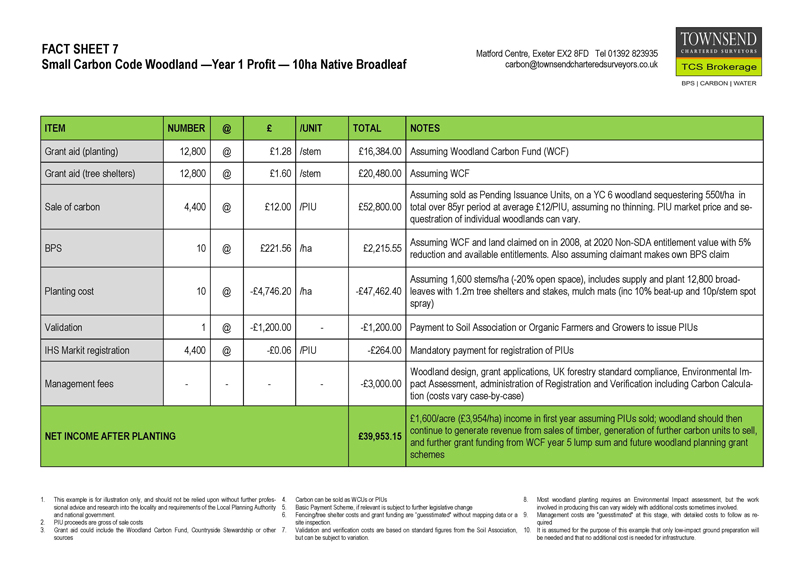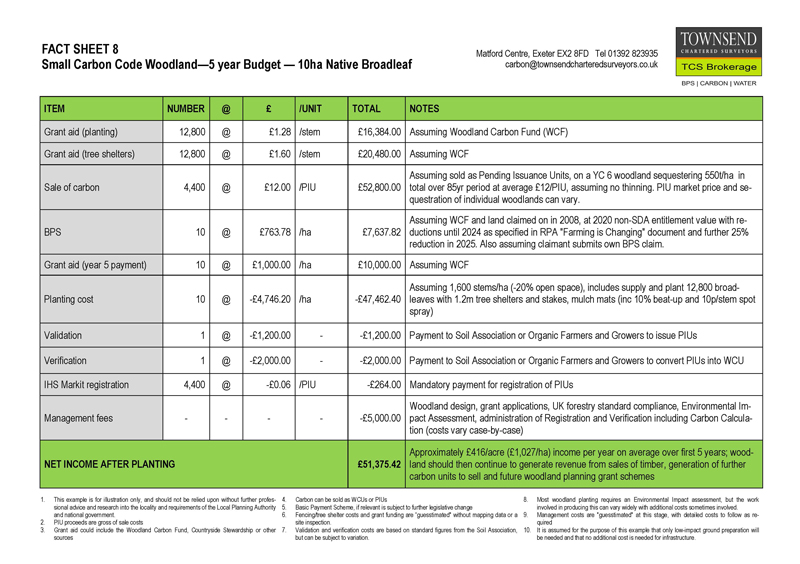Much has been made of the upcoming reductions to agricultural subsidies. BPS is to fall by 25% for the largest claimants next year, with further reductions to follow. The popular RDPE Growth Fund and Countryside Productivity Scheme have now closed for new applicants and very little is currently known about the Farming Investment Fund set to replace them. We have recently seen figures from the Treasury suggesting hundreds of millions of pounds will be cut from subsidy budgets for the devolved nations.
At a time like this, any measures which could help to guarantee subsidy funding into the future should be considered carefully. This must especially be the case for areas where funding may actually be increasing. New woodland planting is one such area.
The grants to cover the costs of planting trees are well-established. These are either the Woodland Carbon Fund or the Countryside Stewardship Woodland Creation Grant. Each of these usually offers a one-off payment of up to £2,750 per acre, with an additional payment for maintaining the woodland after establishment. Only one of these two grants may be claimed per planting.
There is now, in addition, the Woodland Carbon Code. This allows the landowner to earn “credits” for carbon the new woodland takes in from the atmosphere. These can then be sold to private sector companies, who are increasingly willing to pay significantly to improve their “green” credentials. These credits can either be sold as “pending issuance units” (PIUs) before the woodland has grown, as more valuable “woodland carbon units” throughout the woodland’s life, or as a combination of both. Credits can also be sold to the government via a reverse auction under the Woodland Carbon Guarantee scheme. The most recent published auction result valued credits at an average of £19.71 each, and our own clients’ results suggest the as-yet-unpublished auction in October-November may be similar.
Provided that the planting is funded by one of the schemes mentioned above and was claimed under the Single Payment Scheme in 2008, it could still remain eligible for the BPS until this is phased out in 2027.
Combined, this funding means that if the maximum amount of PIUs are sold immediately, a 25-acre broadleaf planting could earn £1,600 per acre/£3,710 per ha in the first year, or £398 per acre/£983 per ha on average over the first five years, net of costs. As the woodland matures beyond this time it will eventually produce income from clearfell, as well as further grant funding such as the Countryside Stewardship Woodland Management Plan grant. Such less densely planted sites can also still be used for undergrazing, subject to Forestry Commission permission in the first 10-15 years.
These factors combine to make woodlands a secure source of income on less productive land. Now, more than ever, is the time to take a closer look at this longer-term “crop”. Our forester heads up a team which can provide a “one-stop shop”, from choosing the most suitable woodland site, design, grant options and management to selling the carbon units through TCS Brokerage, the leading rural broker in the UK.


Download/view article here

